
|
|

|
Environment & Energy: |
|
'Unconventionals are easy to find but hard to get' In: European Energy Review January 2012 Read online >> |
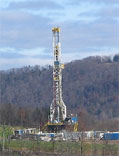
|
Intro:
Don't expect a US-style boom in shale gas production in Western Europe. It's still not proven
that economically viable reserves of shale gas even exist over here. Compared with North America,
the regions in Europe characterized by the necessary geological conditions for shale gas are scarce.
This is the opinion of Jan de Jager, newly appointed professor in Regional and Petroleum Geology at
the University of Utrecht, who before his appointment worked as exploration geologist for Shell
for over 30 years. De Jager notes that unconventional gas tends to be 'easy to find, but hard to produce' - certainly in North Western Europe. Photo: Marcellus Shale © Ruhrfisch - Wikimedia Commons |
|
Solar power in growing pains In: European Energy Review January-February 2009  Download pdf >> 291 kb Download pdf >> 291 kb |
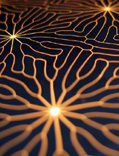
|
Intro:
The production of solar cells across the
globe is experiencing unprecedented
growth. In 2007 production increased
by 70%, as opposed to an average of 40%
in previous years. Today, the installed
worldwide capacity amounts to 10
GigaWatt-peak (GWp). Although this is still
only about 10% of installed wind power in
the world, the other good news is that the
price of solar power is still going down. ‘In
about ten years’ time, the price of solar
will equal the price consumers pay for
conventionally generated electricity,’ says
Paul Wyers, unit manager of Solar Energy
at the Energy research Center of the
Netherlands (ECN). Photo: Detail Solar Panel © Solland Solar |
|
Wind power conquers the globe In: European Energy Review , July-August 2008 Read this article in European Energy Review >> (pdf) |

|
Intro: Europe threatens to be overtaken by China and the US as the leading wind power
markets. China is now producing more wind turbines than ever and could even end up supplying
the European wind industry. Although Europe’s target of 20% renewables by 2020 seems enormously ambitious,
Arthouros Zervos, president of EWEA,
puts the figure of 180 GW installed capacity into context:
‘It isn’t that ambitious if you compare it to what’s happening on a global scale.’
The US and China will generate a lot of wind energy in the future,
and in the case of China become a major turbine manufacturer. Photo: 5 MW REpower turbine being installed at Thornton bank © REpower. |
|
New in Norway: Floating wind turbines Read online: European Energy Review , May-June 2008  Download pdf >> 166 kb Download pdf >> 166 kb |
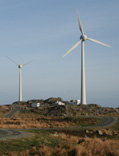
|
Intro:
Compared to other European countries, Norway has very little installed wind power capacity.
But this is about to change. Two different prototypes of a floating wind turbine will soon
be tested in the North Sea, off the south-west coast. Near the island of Utsira,
where wind velocities are high and steady, a consortium of companies want to build Europe’s
first floating wind park. Norway has vast deep sea areas,
and not so much shallow water. That’s why the country is now developing deep-water wind technology.
Another advantage of wind parks in deep water is that they can hardly be seen from the shore, so
there is less public resistence. Photo: Annemieke van Roekel |
|
De volmaakte rivier (The perfect river) In: Wildlife Magazine, Maart-april 2008  Download pdf >> 694 kb Download pdf >> 694 kb |

|
Intro: Rivers used to be a dynamic part of the natural system. According to water and
weather circumstances, they adapted their shape. But times have changed. Meandering rivers have been
transformed into straight canals. As glaciers are melting more rapidly than before, rainfall increases
and the sea level rises, a static river system won't meet up with demands nature asks for. Climate change
might have a enormous impact on the future river landscape in the Netherlands. The article (in Dutch)is based on an interview with Alex van Heezik, author of 'Strijd om de rivieren'. The study will soon appear in the English language as well. Photo credits: Rijkswaterstaat |
|
Digital fields help produce more oil In: European Energy Review , March-April 2008  Download pdf >> 522 kb Download pdf >> 522 kb |
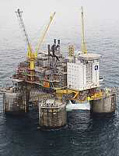
|
Intro:
2014 will be a critical year with respect to global oil demand, as demand
will probably surpass production then. There will not be enough new
oil fields, or new fields will be increasingly located in politically unstable regions.
Oil production will also become more complex, e.g. at deep sea locations, in areas where
the underground geological structure is complicated, or in polar climates.
To win more oil from existing fields, the oil industry has been developing enhanced
oil recovery (EOR) methods for the past fifty years. Increasing oil production is also realized
by developing digital fields, that combine smart technologies with enhanced
information and communication technology. Photo: Troll field, Helge Hansen/StatoilHydro |
|
'Hydrogen is a choice' In: European Energy Review , January-February 2008  Download pdf >> 194 kb Download pdf >> 194 kb |

|
Intro: ‘Transport on the basis of hydrogen is a choice. A hydrogen economy will
not come about by itself. It is the option with the best outlook in terms of emission
reductions and security of supply, but it is also the most difficult to
introduce. If we make a conscious choice, it is possible that a considerable number
of cars and trucks will be equipped with fuel cells and will use hydrogen in 25 years time,’
says Harm Jeeninga, hydrogen specialist at the Netherlands Energy
Research Centre. We shouldn't lose sight of the fact that the hydrogen vehicles on the road
at the moment are still prototypes and that serialized production is out of the question yet. Photo: A. van Roekel |
|
Klimaatverandering. Wie doet er wat aan? (Climate change. Who will act?) In: Wildlife Magazine, juli-augustus 2007  Download pdf >> 1,06 mb Download pdf >> 1,06 mb |
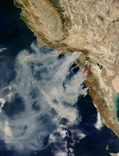
|
Intro: Climate change is a real problem to mankind. Also plant and animal life
will suffer if the temperature on our planet will keep on rising. Ecologists expect coral reefs in
the tropics and amphibians worldwide to be mostly effected. Habitats will shrink, as is already happening right
now in polar and mountainous areas. Some species will get extinct, other
will migrate if they get the chance. Effect of recent climate change
is visible on all continents, Americans scientists have shown. But climate change
also has positive effects. On a longer time-scale, is has proven to be an impulse to evolution. Photo by Nasa, MODIS Rapid Response Team, Goddard Space Flight Center: Emission of greenhouse gases during forest fires |
|
De oceaan als vuilnisvat (Ocean as Dustbin) In: Wildlife Magazine, november-december 2006  Download pdf >> 1,2 mb Download pdf >> 1,2 mb
|

|
Intro: Almost every Fulmar in the North Sea has plastics in its stomach. 'These pelagic birds eat anything that floats on the ocean's surface, including marine litter like plastics,' says Jan Andries van Franeker, international Fulmar expert, working at IMARES, The Netherlands. Fulmars (Fulmarus glacialis) serve as monitoring instruments for marine litter in the North Sea and Northern Atlantic Ocean, since the Ministers of the North Sea countries decided to start the Ecological Quality Objectives - EcoQO's - in March 2002. A pilot study for monitoring this Fulmar-Litter-EcoQO includes target levels representing a cleaner North Sea. Photo by J.A. van Franeker/IMARES To Dutch summary >> |
|
Natuur leert leven met vervuiling (Nature Adapts to Pollution) In: Natuurwetenschap & Techniek, mei 2006  Download pdf >> 315 kb Download pdf >> 315 kb
|

|
Summary: 175.000 sites in rural areas in the Netherlands are severly polluted. In the Stimulation Program System-oriented Ecotoxicological Research (SSEO), a selection of rural sites (estuaries, wetland and peat meadows) has been subject to ecotoxicological research. Effects of heavy metals on animals are indicated, although natural circumstances such as drought, flooding and food scarcity may have more effect. The Dutch delta has been polluted by heavy metals in the second part of the 20th century, when chemicals were imported via the rivers Rhine and Meuse. Input from Germany has decreased, but import from Belgium and France is still going on. Photo by Maja Roodbergen: Black-tailed godwit. Read summary in Dutch >> |
|
Brand in de Noordzee! (North Sea on Fire!) In: Wildlife Magazine, januari/februari 2006  Download pdf >> 1,1 mb Download pdf >> 1,1 mb
|
Summary: Adipose (fatty) tissue of dolphins in European seas contains high levels of brominated flame retardants. These chemicals are mainly used in the production of textile, carpet, foam and electronics. Some types bioaccumulate in fatty tissues of mammals. The EU phased out PBB's and Pentamix (a PBDE) was banned recently. The most popular PBDE nowadays is Decamix but NGO's doubt the supposed low toxicity of Deca-BDE and point to the risk of their metabolites. The Dutch institute NIOZ found isomeres of HBCD (esp. abundant in the Irish Sea) to bioaccumulate in sea mammals where they may disrupt thyroid function. However, negative effects on the reproduction of mammals have not been scientifically proven yet and are further investigated in the EU-project Fire. |
|
Zeewater uit de kraan, cover story (Sea Water from the Tap) In: Natuurwetenschap & Techniek, oktober 2005  Download pdf >> 1,5 mb Download pdf >> 1,5 mb |
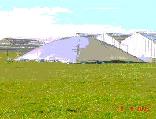
|
Summary: The biggest desalination plant on earth is the Earth itself: every year 100.000 cubic kilometres of sweat water ends up on the continents. According to the Dutch Acacia Institute, we should optimise the use of groundwater by redeveloping traditional storage systems. The Ecological Management Foundation expects desalination to become more important in the near future. A new low-energy desalination method, Memstill, is now being developed in the Netherlands. To meet UN Millennium Goals, low-tech solutions should be developed as well, such as the reward winning WaterPyramide, using solar distillation. Photo by Aqua-Aero WaterSystems: WaterPyramid in The Gambia. Click on the picture for a better view. |
|
Grenen wordt hardhout (Transforming softwood into hardwood) In: EOS Magazine, april 2005  Download pdf >> 144 kb Download pdf >> 144 kb |
Intro: Improving timber durability is usually done by impregnating softwood with chemicals or one stage heat treatments. Since 2000, Plato Technology is commercially available. Originally developed by Royal Shell to produce oil from wood, the Plato process offers an alternative to less environmental friendly technologies and has a technical potential to relieve the demand for wood from tropical forests. Read on (in Dutch) >> |
|
KNMI: 'In 2050 is het ozongat weer dicht' (KNMI: 'In 2050 the ozone layer will be repaired') In: EOS Magazine, december 2004  Download pdf >> 1,1 mb Download pdf >> 1,1 mb
|
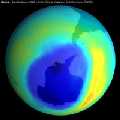
|
Intro: Scientists at the Dutch weather research institute KNMI predict that the ozone layer should be 'repaired' within half a century. The ozone layer, at an altitude of around 30 kilometres, filters harmful ultraviolet light and is important in protecting life (esp. DNA) on Earth. This optimistic forecast can only become reality if environmental policy aiming at reducing emissions of harmful gases into the Earth's atmosphere is strictly put into practice by members of the states that ratified the Montreal Protocol. Photo by NASA: Antarctic Ozone Hole in 2000. Read more about the effects of UV on plants (in Dutch) >> |
|
© Annemieke van Roekel, 2005. Niets van deze website mag worden vermenigvuldigd of openbaar gemaakt door middel van druk, microfilm, fotokopie, plaatsing van teksten en/of afbeeldingen op andere websites of op welke wijze dan ook zonder voorafgaande schriftelijke toestemming van de auteur en de betreffende tijdschriftredacties. [home] [top] [contact] [disclaimer] |